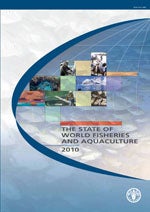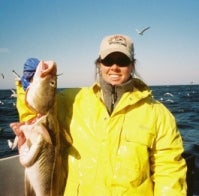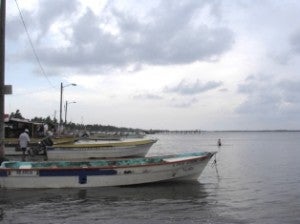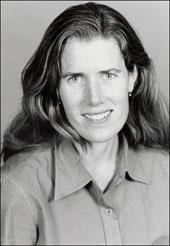 The Food and Agriculture Organization of the United Nations (FAO) recently reported that fish consumption is at an all-time high globally, and “more people than ever are employed in or depend on the [fisheries and aquaculture] sector.” According to the FAO report, “The overall percentage of overexploited, depleted or recovering fish stocks in the world’s oceans has not dropped and is estimated to be slightly higher than in 2006.” This data demonstrates the continued need for innovative fishery management systems that ensure fishermen livelihoods all while ending overfishing and rebuilding fish stocks.
The Food and Agriculture Organization of the United Nations (FAO) recently reported that fish consumption is at an all-time high globally, and “more people than ever are employed in or depend on the [fisheries and aquaculture] sector.” According to the FAO report, “The overall percentage of overexploited, depleted or recovering fish stocks in the world’s oceans has not dropped and is estimated to be slightly higher than in 2006.” This data demonstrates the continued need for innovative fishery management systems that ensure fishermen livelihoods all while ending overfishing and rebuilding fish stocks.
EDFish
Selected tag(s): Fisheries
FAO Releases 2010 Report on the State of World Fisheries and Aquaculture
Catch Share Design Manual and Online Design Center Provide Guidance for Fishery Managers and Fishermen
Kate Bonzon leads Catch Share Design Services at EDF and authored the Catch Share Design Manual along with her team, Karly McIlwain, Kent C. Strauss, and Tonya Van Leuvan.
Overfishing is the biggest driver of declining fisheries globally, and conventional fishery management approaches have failed to correct this. Conventional management has led to unsafe derby-style fishing, increasingly shrinking fishing seasons, and low market prices all while fish populations in the ocean continue to decline.
We need a different approach.
Catch share management is a solution to overfishing that keeps fishermen on the water and fishing as fish resources recover. Under catch share management, managers establish a scientifically-set, fishery-wide catch limit; assign portions of the catch, or shares, to individuals or groups of fishermen; and hold them directly accountable to stay within the catch limit.
Increasingly, fishery managers and fishermen are looking to catch shares as a locally-designed solution to failed fisheries management (about 275 programs already exist worldwide in fisheries large and small). Identifying the biological, economic and social goals of a fishery and incorporating design elements to meet these goals is critical to the program’s success for fishermen, fishing communities and the resource. As fishery managers and fishermen go through the design process, they have a flexible array of options from which to choose.
But, understanding what options exist and what process works for catch share design has been a key challenge in program development.
Now there’s a dynamic new tool and guide to help improve understanding of catch share programs around the world: the Catch Share Design Center. The Design Center includes several new tools and resources:
- The Catch Share Design Manual, which is the first-ever comprehensive overview and roadmap through the catch share design process, drawing on hundreds of fisheries in over 30 countries and expertise from over 60 fishery experts from around the world. The Design Manual is not prescriptive, but rather, poses a series of questions and highlights frequently used approaches from around the world. It describes a 7-Step process to guide and inform the design of catch shares for commercial fisheries, including four in-depth case studies of fisheries that have implemented catch shares. The case studies provide comprehensive, real-life examples of the design Steps and decisions in action.
- The global database of catch share fisheries allows users to explore and understand the design elements and characteristics for 275 catch share programs worldwide. The database is dynamic, being updated regularly, including with information from viewers or other experts.
- The directory of resources serves as a forum for catch share experts and businesses to connect with fishery managers and fishermen engaged in catch share design and implementation.
- Go Fish, No Fish is a game-oriented teaching tool that illustrates the differences in conventional fishery management and catch shares.
The Catch Share Design Center seeks to provide cutting-edge information and tools to fishery managers, fishermen and others in order to advance the development and implementation of catch share programs. We welcome your participation in this endeavor.
Fishermen Embrace Change in the Sinaloa, Mexico Shrimp Fishery: Part I
Over the past two months EDF’s outreach team traveled over 200 miles up and down the coastal state of Sinaloa, Mexico visiting five major lagoons that participated in the artisanal shrimp fishery catch share program. We were all eager to listen to fishermen’s concerns and see first-hand how this new catch share management program was progressing. The artisanal shrimp fleet opened under a catch share management system in September 2009, an initiative of the federal fisheries management authorities – Conapesca and Inapesca, with the support of EDF, WWF, and Noroeste Sustentable – a local Mexican NGO.
Conventional wisdom says that people are generally resistant to change, but what we heard from over 1,000 shrimp fishermen was quite the opposite. In fact, these fishermen want change and are ready to embrace the change that catch shares represents for them and their fishery. Furthermore, EDF’s outreach team was far from the middle aged Mexican male bureaucrat official that is status quo for these fishermen. Without anticipating it, we ended up representing change simply because we were a group of women from all different parts of Mexico coming to talk to them about how to keep their fishery alive and thriving.
It then became our goal to cultivate trust and encourage these fishermen to “keep the faith” that catch shares is a change for the better. This story portrays the sentiments of many fishermen that our team met in dozens of fishing camps.
Imagine you are an artisanal fisherman fishing in the lagoons and bays of Sinaloa, Mexico. You are a member of the same cooperative your father was during his days as a fishermen; you are a proud fisherman because you work alongside family and neighbors on the waters of the once-bountiful Gulf of California – it is your community and your livelihood.
Occasionally you daydream about your father’s fish tales of when the mangrove forests were lush and sprawling and the lagoons were teeming with big blue shrimp. A season’s catch was enough to buy a new pickup truck or take the kids to the doctor and send them to school with new books and tennis shoes. Unfortunately times have changed…
Today mangroves are being cleared for shrimp farms producing smaller, cheaper shrimp that lowers market prices of all shrimp. The lagoons are filling up due to sediment washing down from the growing number of agricultural fields, as Sinaloa has become the largest vegetable producing state in Mexico. As a result, more and more pesticides and other pollutants are entering the lagoons causing shrimp hatches to decline. Last year’s catch barely put food on the table for your family, and your cooperative is battling debt. You feel trapped and know that something has to change if you want to return to those days of plenty. No one is playing by the rules, more and more illegal fishermen are poaching the lagoons, and traditional enforcement efforts are futile.
But, this past year seemed different.
This past fishing season a team of government and NGO representatives arrived in your community to talk to you about catch shares, an innovative management system that establishes a total allowable catch for the fishery and allocates shares to each cooperative with the goal of ensuring a sustainable catch and improving the value of the fishery. Meanwhile, Conapesca has paved a brave new path by installing microchips on all the skiffs, handing out identification cards for all licensed fishermen and sending an independent company to monitor your cooperative’s landings.
You listen attentively in the workshops, and considering your circumstance the arguments are compelling. You speak with your fellow fishermen and everything looks quite promising so you decide to support the transition to catch shares and wait to see how it plays out in practice You prepare your skiff knowing your cooperative is only getting a small percentage of a total number of shrimp that you have to share with 140 cooperatives, 5,988 skiffs and more than 10,000 fellow fishermen.
The season opens and the usual “race to fish” seems to have subsided. Unfortunately though, it is an “El Niño” year so the temperatures seem colder than normal and you are catching significantly less than last year. While the monitoring company appears to be doing their job, you can’t help but notice that many illegal fishermen are still on the water, and can easily land and commercialize their catch – enforcement is lacking. Some of them you can’t blame because they are locals who are just trying to provide for their families. But your frustration mounts as temporary fishermen from other areas, even ones who migrate back from the United States for this lucrative short season, dip into the catch.
You feel robbed because you are playing by the rules, catching your share but know that there are still too many leaks in the system. The season comes to a close and it feels as though little has changed.
Stay tuned for more on the Sinaloa story …
Pacific Groundfish Catch Shares Approved, Slated to Start Jan 1, 2011
After seven years of planning, the catch share program for the Pacific groundfish trawl sector has cleared one of its final regulatory hurdles. On Tuesday, NOAA’s Fisheries Service approved the plan submitted by the Pacific Fisheries Management Council to revitalize the multi-million dollar fishery. The new system joins a spate of other new catch share programs around the country, including one for the iconic New England groundfish fishery and the grouper and red snapper fishery in the Gulf of Mexico.
In the West Coast groundfish sector, fishermen have struggled to make a living under the current management system and have been plagued by increasingly strict regulations to address the incidental catch (bycatch) of depleted fish species. Landings for West Coast trawlers had plummeted 70 percent in the last two decades, and since 1998 revenues have dropped from $47.3 million to $22.2 million.
The new system provides fishermen with a guaranteed percentage of the overall catch, based on the size of their vessel and their fishing history. Under catch shares, fishermen will have much greater freedom to fish when they want, and will also be able to sell or lease their shares to other fishermen. Based on results from other fisheries that have transitioned to catch shares, bycatch is expected to drop dramatically for the West Coast trawl fleet, allowing fish stocks and the industry to recover from years of decline.
We applaud both NOAA and the Pacific Fishery Management Council for taking this important step. This is a new day for a fishery that was declared a disaster just ten years ago. From now on, West Coast trawlers will not be in a rush to fish and deliver their catch. Instead, they will time their trips in accordance with both weather and market forecasts, maximizing their profits while fishing in a safer, more efficient, and sustainable way.
The approved plan includes precedent-setting provisions aimed at protecting coastal communities and the environment. There are several features in the plan that makes it stand out as a model for sustainable and adaptive fisheries management. The Council and NOAA have seen to it that fishermen and coastal communities have a real say in how they adopt new practices and adapt to the catch share system.
Years from now, when we look back on this moment, we’ll see that this was a turning point for West Coast trawlers and the groundfish species they harvest.
The Future of the Pacific Groundfish Trawl Fishery Without the Catch Share Program
Fishermen in the Pacific groundfish trawl fishery are understandably anxious about the transition to catch shares that starts January 2011, but it’s helpful to consider what is likely to happen if the fishery is left under current management. Perhaps the biggest problem facing fishermen and fishery managers is that eight out of over 90 species caught by fishermen are overfished. To protect these overfished species, fishery managers have closed parts of the ocean to fishing by creating “Rockfish Conservation Areas” that have changed shape in response to locations of overfished species. In recent years, productive fishing grounds off Washington and southern Oregon have been among the areas closed. If current management were to continue there would likely be more closures off other areas of the coast.
I’ve had the experience of working as a fishery manager in the Pacific commercial groundfish fishery for over 6 years and have seen how the existing management system is slowly suffocating the industry and fishing communities. Avoiding closures is just one reason why I see the groundfish trawl IFQ (catch share) program as progress in Pacific groundfish fishery management.
Civility, A Surprise Visitor to the NOAA Law Enforcement Summit
I spent yesterday participating at the NOAA Law Enforcement Summit in Washington DC along with 60 or 70 other stakeholders and a rare thing happened, at least for this city: Despite having strongly differing views about NOAA’s past law enforcement record and how the agency should move forward in remedying problems from the past, there was no shouting, no name calling , no fist shaking, no angry diatribes. Instead, there was politeness, constructive comments and interesting and creative ideas on improving law enforcement transparency, consistency and communications. In polarized Washington DC ? How the heck did that happen?
For one thing, the summit was organized and well run by professional facilitators with the participants assigned to small working groups for focused discussions. The people assigned to my table were an amazing mix of people with extremely different backgrounds with significantly differing views: a representative of the charter boat industry, the head of a state fishery agency, a University of Maryland professor who had conducted exhaustive research on NOAA law enforcement activities, a New England seafood marketer, a NOAA law enforcement agent, a representative of the commercial fishing industry, and myself representing the Environmental Defense Fund.
At least one of our table participants stated firmly at the beginning that he was staunchly anti-law enforcement or something to that effect and my initial internal reaction was “oh boy, here goes the bar fight” but then the unexpected thing happened. A really fascinating conversation began unfolding with everyone being very respectful of each others opinions and folks trying real hard to come up with constructive ideas for helping NOAA enhance the effectiveness of its law enforcement program.
The professor from Maryland turned out to be a virtual fountain of fascinating statistics and past analyses of NOAA law enforcement activities and the representatives at the table from the Pacific Northwest and Alaska shared insights on how they had resolved many of the issues years ago that are now starting to surface in the South Atlantic. But perhaps the conversation that transfixed me the most was the dialogue which unfolded between the NOAA law enforcement agent and the participant who had initially stated that he was strongly anti-enforcement. It was respectful, constructive and enlightening.
By the time the summit ended, the comment that I heard from virtually everyone in our group was that it had been a “really good group of people” at our table and that people had really enjoyed the conversation and the ideas that we had ultimately developed. Everyone exchanged business cards and I truly expect to touch base with many if not most of these people again.
This was the second facilitated summit-like meeting sponsored by NOAA that I have attended in the last three months (the other one involved recreational fishing) and in each case potentially explosive, emotion charged issues were handled diplomatically and effectively, creating an atmosphere that facilitated the exchange of ideas with civility and respect. Boy, have we been missing those elements recently in the political gladiator wars in this city.
The hard work on improving and enhancing NOAA law enforcement has just begun and a one day summit is not going to provide all the answers or solutions that will be needed. Far from it. But having said that, Dr. Jane Lubchenco and Eric Schwaab have now twice organized meetings where people with strongly held (and often differing) opinions could discuss their differences in a constructive atmosphere without insulting the motives or the values of the person seated next to them. I generally hate day long meetings but I would willingly come back for a third NOAA summit if it would allow me to work on problem solving again with as interesting and insightful people as the ones sitting around my table.















